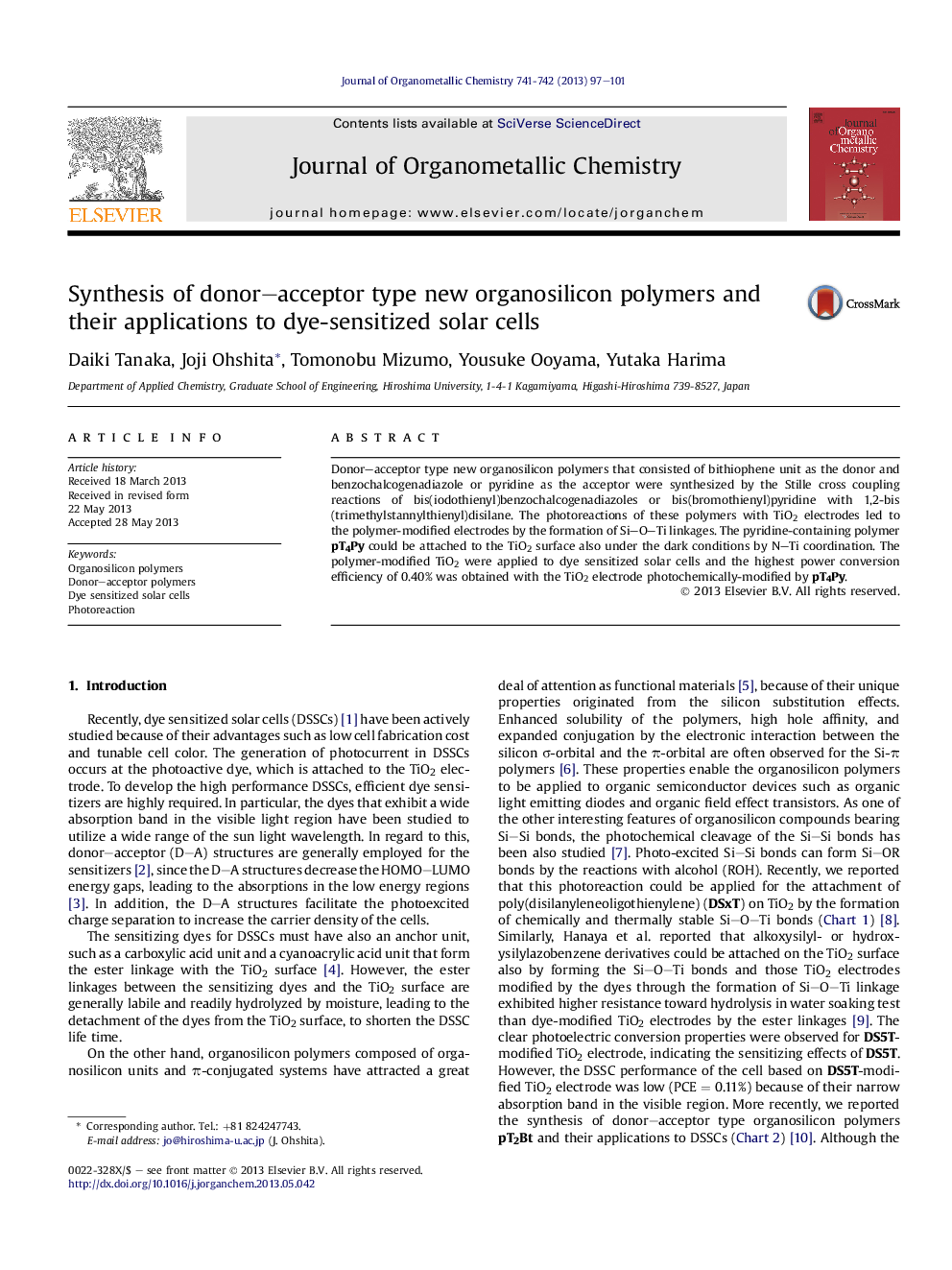| Article ID | Journal | Published Year | Pages | File Type |
|---|---|---|---|---|
| 1325673 | Journal of Organometallic Chemistry | 2013 | 5 Pages |
•Donor–acceptor type organosilicon polymers were synthesized and applied to DSSC.•The polymers could be photochemically attached to TiO2 surface.•The cell with the polymer bearing pyridine as the acceptor exhibited the highest performance.
Donor–acceptor type new organosilicon polymers that consisted of bithiophene unit as the donor and benzochalcogenadiazole or pyridine as the acceptor were synthesized by the Stille cross coupling reactions of bis(iodothienyl)benzochalcogenadiazoles or bis(bromothienyl)pyridine with 1,2-bis(trimethylstannylthienyl)disilane. The photoreactions of these polymers with TiO2 electrodes led to the polymer-modified electrodes by the formation of Si–O–Ti linkages. The pyridine-containing polymer pT4Py could be attached to the TiO2 surface also under the dark conditions by N–Ti coordination. The polymer-modified TiO2 were applied to dye sensitized solar cells and the highest power conversion efficiency of 0.40% was obtained with the TiO2 electrode photochemically-modified by pT4Py.
Graphical abstractNew donor–acceptor type disilanylene-polymers with bithiophene as the donor, and benzochalcogenadiazole or pyridine as the acceptor were prepared and their applications to dye sensitized solar cells were examined.Figure optionsDownload full-size imageDownload as PowerPoint slide
